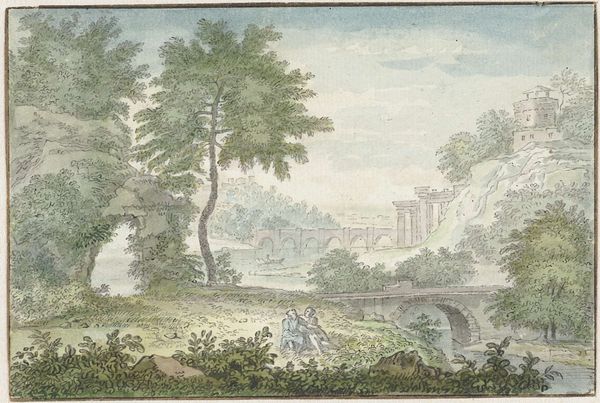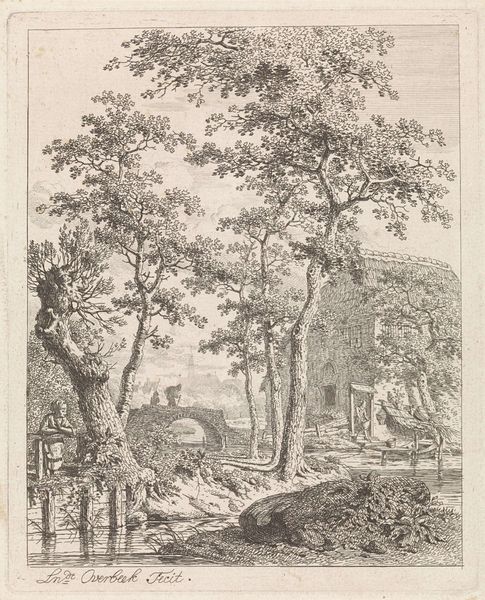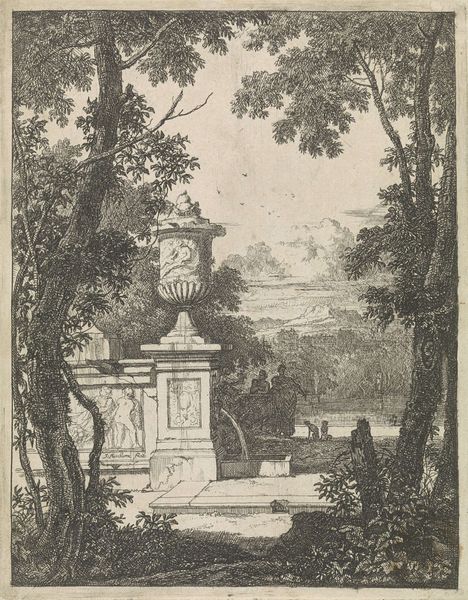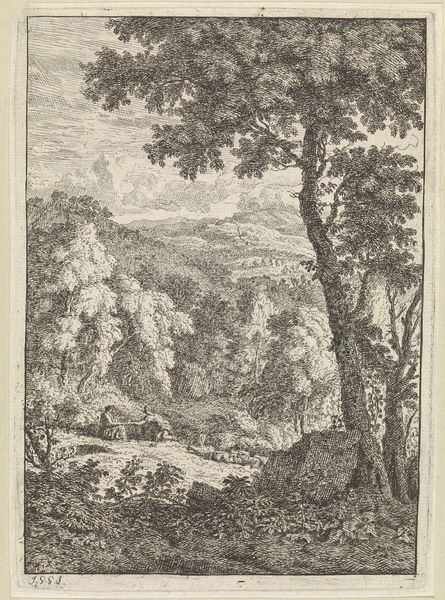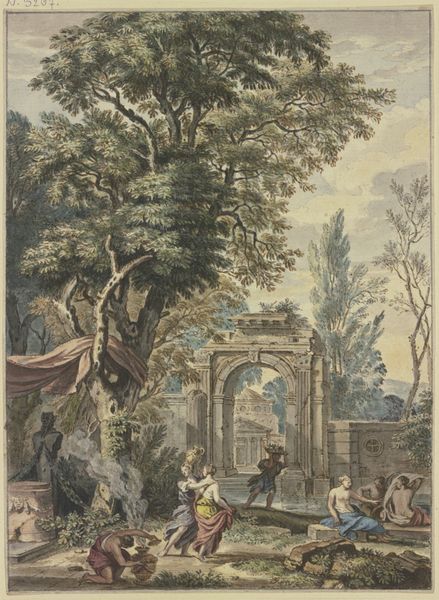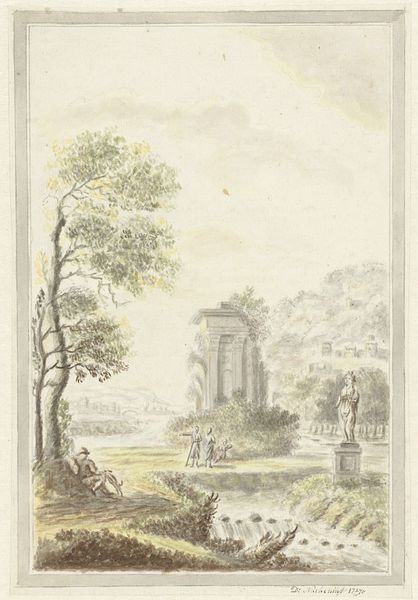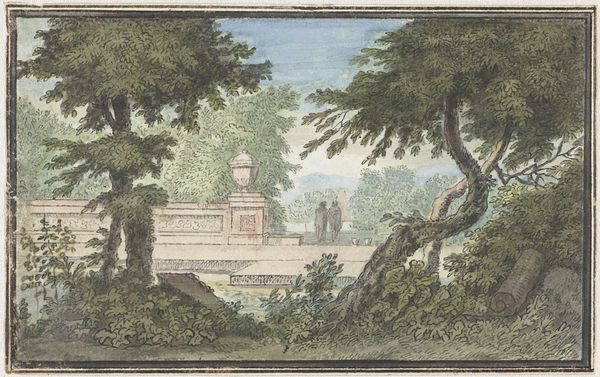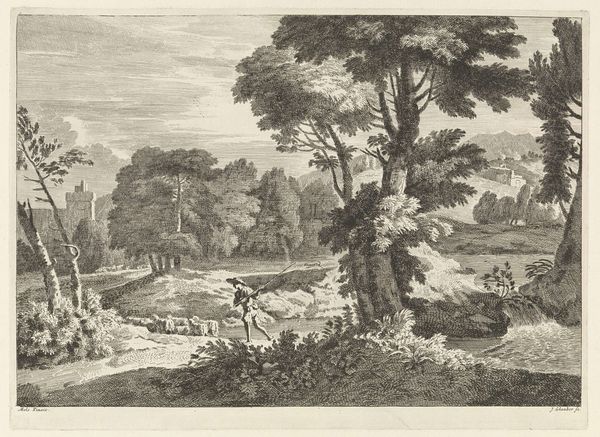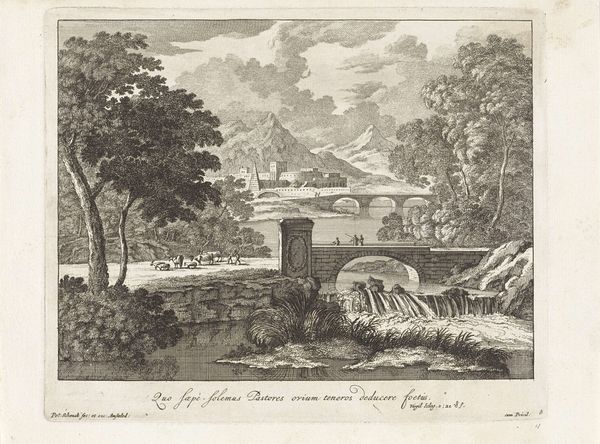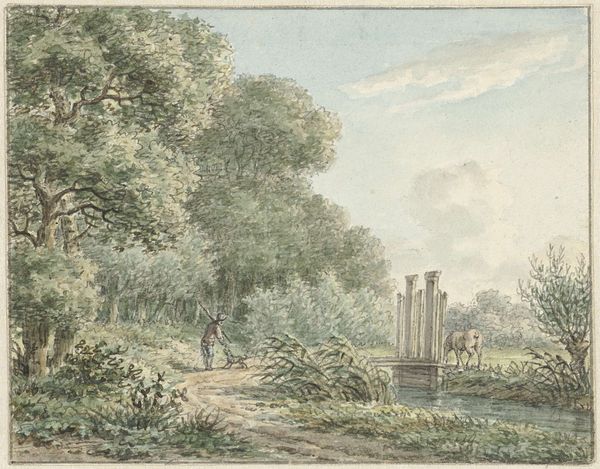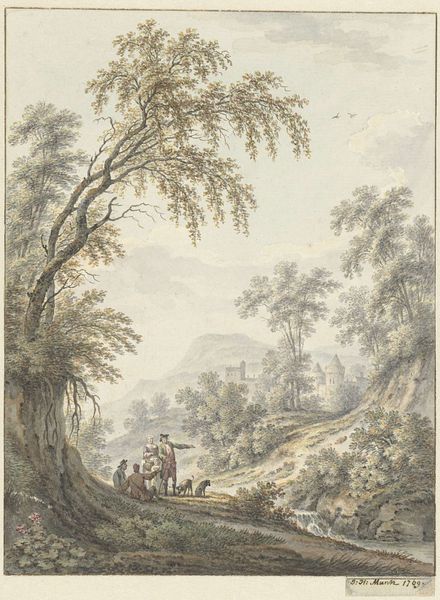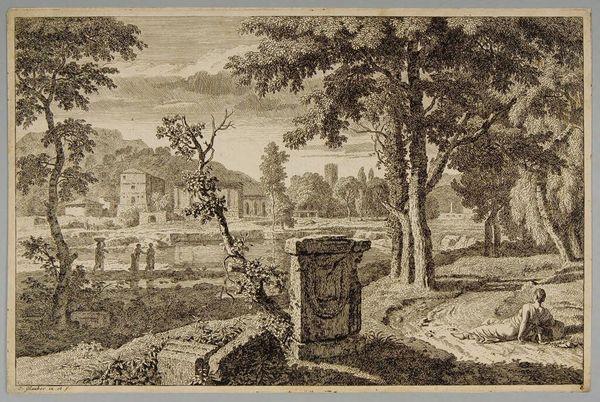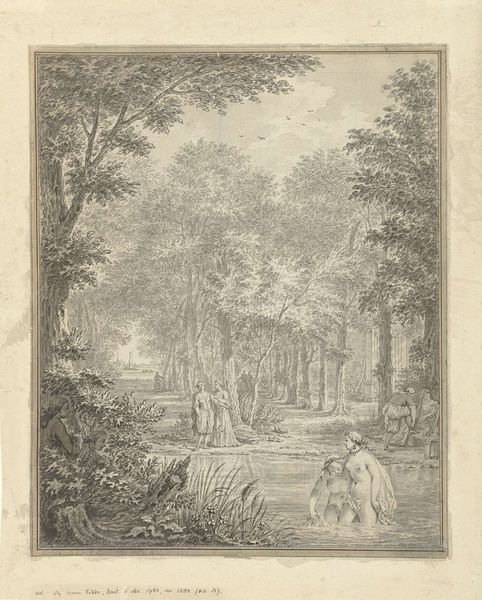
Arcadisch boslandschap met een waterval, een brug en drie jongemannen 1780 - 1786
0:00
0:00
Dimensions: height 204 mm, width 139 mm
Copyright: Rijks Museum: Open Domain
Editor: We're looking at "Arcadian Landscape with a Waterfall, a Bridge and Three Young Men" by Dirk Versteegh, likely created between 1780 and 1786. It's a watercolor painting, and the scene feels very staged and idealized. The figures seem secondary to the carefully constructed landscape. What strikes you about the materiality and creation of this piece? Curator: I see a negotiation between the 'natural' and the constructed, typical of the era, but revealed more acutely through the material choices. The use of watercolor – usually associated with preparatory sketches or 'feminine' arts – to depict this monumental landscape challenges our ideas of artistic labor. What social conditions made it possible for Versteegh to produce such works? Editor: So, you’re suggesting the choice of watercolor isn't just aesthetic, but also reflects something about artistic status and access to resources? Curator: Precisely! Consider the labor involved in producing the paper itself, the sourcing of pigments. Who had access to these materials, and for what purpose? Were these images intended for private collections, demonstrating a certain level of wealth and taste? Think about the process; the repetitive brushstrokes, the layering – how does that speak to the division of labor within artistic production at the time? Editor: That reframes the way I see it entirely. The apparent tranquility is almost a smokescreen for the underlying economics. Curator: Exactly. This "Arcadian" fantasy masks very real social structures that enabled its creation. Do you see that division between leisure and labor also reflected in the landscape? Editor: Definitely, there’s a stark contrast between the suggestion of untouched nature, like the waterfall, and the man-made bridge and classical architecture elements in the distance. Curator: The material contrast emphasizes the artifice and deliberate staging. It invites us to consider whose labor constructed this idyllic view, both within the painting and outside it. Editor: I hadn’t considered that interplay before. Thanks, this has definitely changed my understanding of what this landscape represents. Curator: Indeed! It is imperative we keep asking such questions; the artwork exists materially as a representation of its society and means of production.
Comments
No comments
Be the first to comment and join the conversation on the ultimate creative platform.
